Those big open roads, those massive landscapes, those iconic vistas you’ve seen in a million and one movies. There is an undeniable charm America has for an iconic road trip.
The West Coast and Western states have formed a particularly strong hold on people in search of a different kind of trip, and understandably so; you’re going to have one unforgettable experience as you discover truly unique places that don’t even seem real.
This Western US road trip itinerary puts together some of the best places you can expect to see on this ultimate trip. However, we’ve done this with a difference.
When looking at the best things to see or the perfect place to take a picture, you can miss out on a lot of places that warrant your attention just as much as the big hitter National Parks. We wanted to highlight the incredible State Parks and Public Lands that have absolutely jaw dropping nature too.
We’ve based this around a big, 21-day trip but you can of course make this shorter by cutting out certain sections.
This West Coast road trip itinerary allows you to really take in the incredibly varied and vast landscapes which change so much over the hundreds of miles radius you’ll be covering. The outlined itinerary below is exactly that, an outline.
There are so many more areas that could be added in here, and we’ve done our best to make suggestions for alterations where possible. Likewise, if you have the luxury of flexibility with your schedule, be sure to leave space for extra days here and there if you find places you really like.
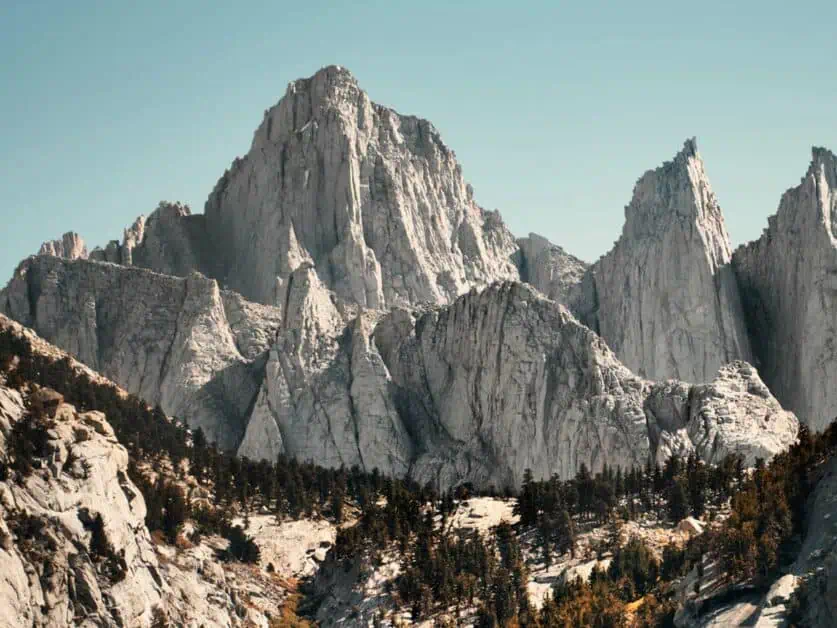
US Road Trip Maps
Road Trip Locations Outline and Summary
Day 1: Arrive in Los Angeles
Day 2: Explore Los Angeles and Surroundings
Day 3: Palm Springs
Day 4: Indian Canyons
Day 5: Joshua Tree National Park
Day 6: Las Vegas
Day 7: Drive to Kanab, Utah, via Red Cliffs National Conservation Area
Day 8: Zion National Park
Day 9: Grand Staircase-Escalante National Monument, Vermilion Cliffs and Glen Canyon
Day 10: Page, Lake Powell, and Horseshoe Bend
Day 11: Grand Canyon National Park
Day 12: Drive to Bryce Canyon National Park
Day 13: Red Canyon and Kodachrome Basin State Park
Day 14: Drive to Death Valley National Park
Day 15: Death Valley National Park
Day 16: Lone Pine and Alabama Hills
Day 17: Mammoth Lakes
Day 18: Drive to Yosemite via Mono Lake
Day 19: Yosemite National Park
Day 20: South Lake Tahoe
Day 21: Drive to San Francisco and San Francisco International Airport
Best Western US Road Trip Itinerary
In this guide, you’ll note we haven’t outlined exact places to stay in each of these areas, instead, we’ve outlined which area to stay in. We think it’s best to stay in the same place and use that as a base to explore as much as possible. Trying to check out of a motel every day and take your luggage can get exhausting on a trip like this, and it’s best to do whatever you can to avoid trip fatigue.
You can just use that as a starting point though, as there are so many options in each area from motels and hotels to campsites, rentals and many more. Do what suits your budget. Whilst some places will have availability on the day, it’s always good to vaguely plan ahead. You’re most likely to find things booked up closest to the National Parks like Joshua Tree, for example.
So, in these cases, it’s good to think a tiny bit further afield in neighboring towns or even some backcountry camps if you’re feeling ready for a wilder adventure. Accommodation can be incredibly reasonable in price, but of course, seasons can affect this, so have a look around when planning your budget.
The beauty with any road trip is that you can tailor the experience as much as you want. You could easily follow our full itinerary and still keep to a tight budget if you mostly camped and prepared your own food.
On the flip side, there’s high-end hotel accommodation and fine dining available near many of the locations we’ve listed, so you can easily turn the same trip into a much more luxurious experience. And, of course, there’s a whole range of options in between these two extremes! For us, that’s the best part of any road trip: truly making it your own.
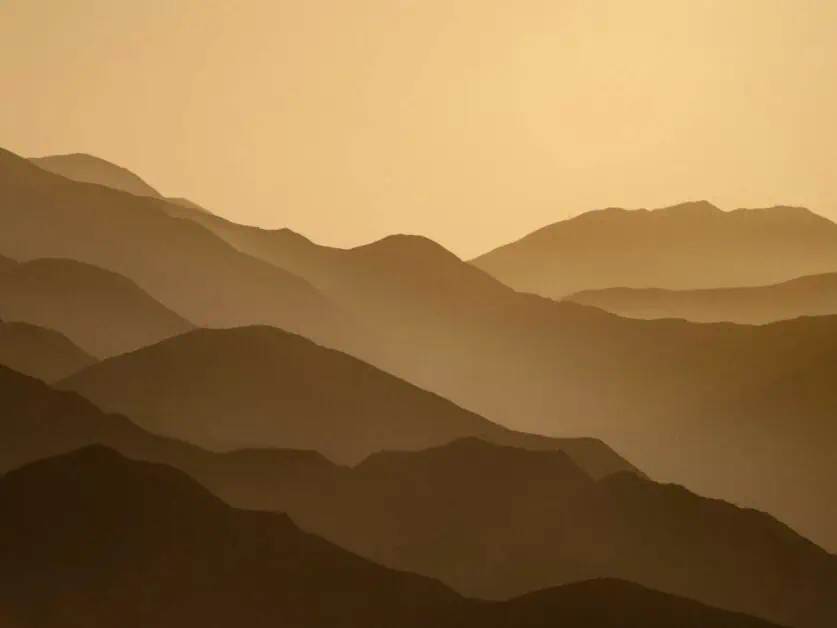
Day 1: Arrive in Los Angeles
Base for the night: Los Angeles, CA
The first day is a great opportunity to pick up your rental car. The rental car villages are located outside the airport buildings, so you’ll need to take the shuttle related to your car hire company from LAX airport. You’ll be based here tomorrow as well, and you’ll have plenty of time for exploring. So, keep it relaxed on your first night.
You can find some of our favorite places to eat suggestions here. LA is a huge place and finding somewhere to stay can be daunting. Our preference is always to stay around West Hollywood, not just because it’s a fantastic place, but also because it puts you close to the freeways you need to get around easily and makes it easy to get out into the mountains and desert.
That said, if the beach is more your thing, then a good place to stay would be around Santa Monica, Venice or Laguna Beach.
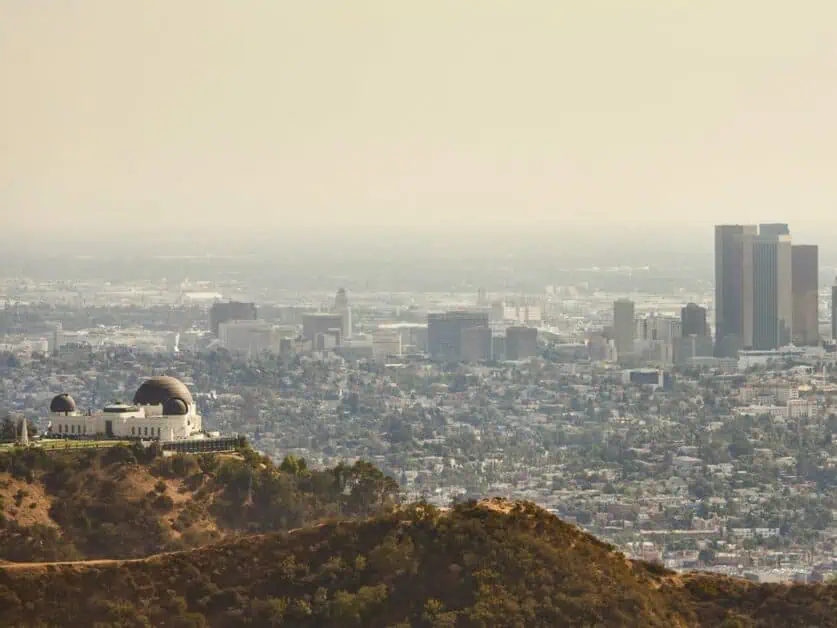
Day 2: Explore Los Angeles and Surroundings
Base for the night: Los Angeles, CA
Today is your opportunity to explore all that LA is well known for. If you want to make an early start on this part of your Western US road trip itinerary, we’d recommend taking the Hollywood sign hike for a good dose of natural beauty and where you’ll be rewarded with fantastic panoramic views of the city. The sign is situated in Griffith Park, which also houses the famous observatory of the same name.
One popular route starts from the parking lot on Canyon Drive in Hollywood. You can find out more about specific routes in our hikes in Los Angeles article. You could finish with brunch at the iconic Beechwood Cafe.
After this, a drive along Mulholland is your next stop – this is where you’ll get to see some of the prime Los Angeles real estate. If you fancy another short hike, you can head to Runyon Canyon too: there are a variety of trails around that can be started off Mulholland Drive.
To take in the incredible coast that Los Angeles is famous for, head north out of Los Angeles on the 101 (or the PCH if you are staying near the beach) and you will soon find yourself in Malibu. Malibu Creek State Park is roughly a 40-minute drive and 28 miles from Hollywood. The park offers a wealth of trails in beautiful rolling countryside – it’s a scenic route paradise.
When you are finished, be sure to pay a visit to the quirky town of Topanga with its many hippy stores and markets. At this point you can then drive down to Venice to check out this area before dinner and heading back to your accommodation for a good night’s sleep after a busy day.
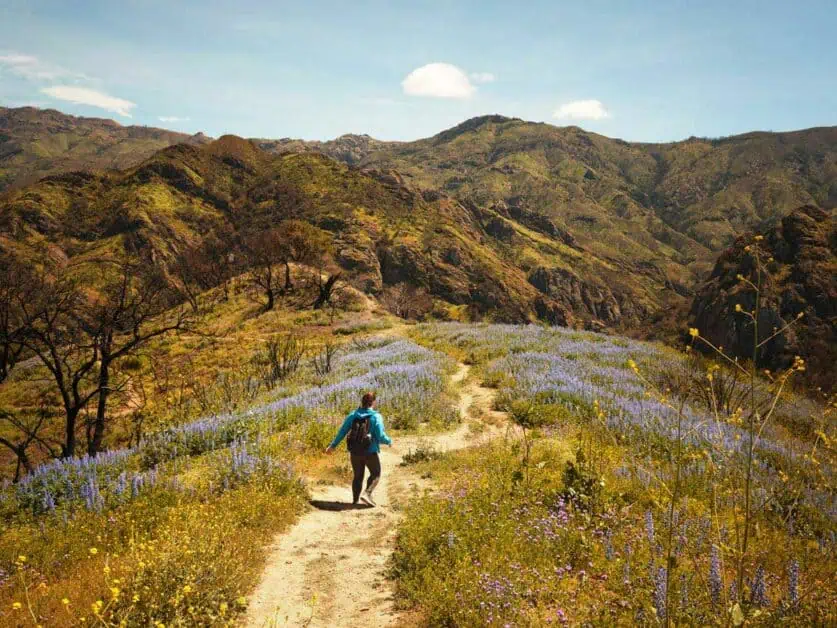
Day 3: Palm Springs
Approx. drive time from Los Angeles: 2 hours/113 miles
Base for the night: Palm Springs, CA
Palm Springs is utterly iconic with mid-century design, which you’ll see evidenced from the houses as your drive into the city. It has a fantastic Americana vibe and once you’ve arrived, you’ll want to spend some time looking around. There are plenty of beautiful antiques shops to take a look at featuring traditional American mid-century design and also some West German too.
If this isn’t so much your thing, go for a drive around some of the houses – you can even drive up to Elvis and Priscilla Presley’s honeymoon hideaway, which is an architectural icon.
Another option for this day is to go and check out San Jacinto State Park and the Palm Springs Aerial Tramway, which is about a 14 minute/5.9 mile drive out of Palm Springs. The Aerial Tramway is a cable car route from the Coachella Valley up into the mountains, bringing you (relatively!) close to the peak of Mt. San Jacinto. The Cable car journey takes approximately ten minutes and climbs around 6000ft in this time.
On route, you’ll have spectacular views over the desert. At the top, the first thing you’ll notice is how much colder it is relative to the bottom station – so make sure you’ve brought some extra clothing. The top station has two restaurants, panoramic viewing platforms and, of course, a gift shop.
It is also the starting point for several easy hike ideas and longer hiking routes which head out through lush pine forest – be aware that you are at high altitude here and don’t be surprised if you feel short of breath sooner than usual.
If you don’t have much experience of high-altitude hiking, it is worth planning a shorter route than normal, as the thin air certainly does take its toll! It is possible to pick up a map from the station at the top, which contains many of the hiking routes up there.
They’re all categorized by distance and the elevation gain so you can make a decision based on the time you have available and what you want to do. Also be aware that some of the longer routes along with overnight camping do require permits.
The hotels in Palm Springs are worth spending a little more for as some of them have exceptionally iconic designs – be mindful these do get booked up in advance, but its well worth putting some effort in here as soaking in the rays by the pool is a bucket list thing to do here!
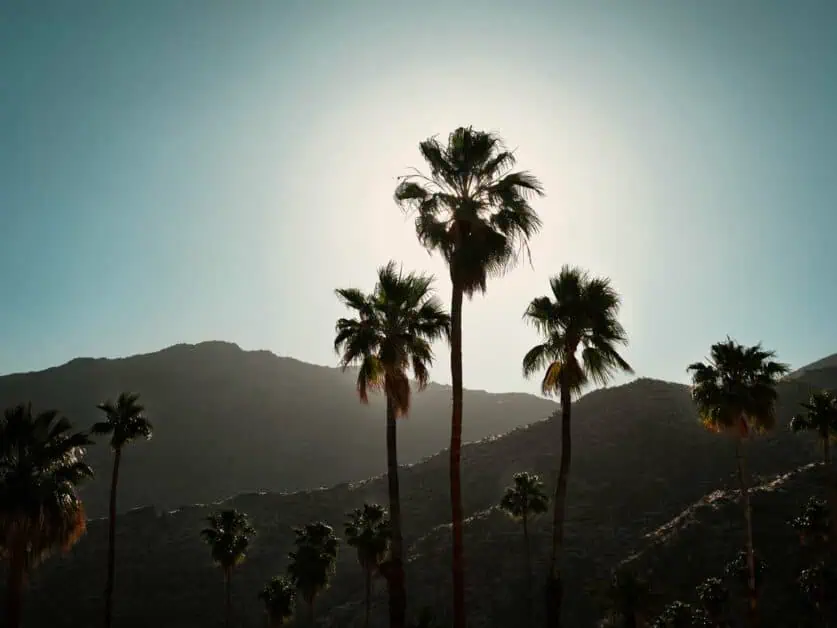
Day 4: Indian Canyons
Approx. drive time from Palm Springs: 11min/4.8miles
Base for the night: Palm Springs, CA
This area is only a short drive from Palm Springs and is an absolute must see area. In fact, it’s one of our favorite areas – it’s not to be missed in this Western US road trip itinerary. It really shows you the variety that North America has to offer.
The magical combinations of massive palm trees and mountain views is just stunning and there is also a lot to learn about native culture here.
This area does get busy, but it’s well worth visiting and once you get out on some of the trails, the amount of people does thin out. If you put the location into maps, you’ll drive to the visitor entrance, pay your day use fee (check the website for Indian Canyons for up to date pricing) and then can drive to any of the parking lots to spend your day.
There is also a visitor center where you can be advised on current trail conditions and which trail might be right for you.
The park is very accessible and has a huge range of trails available, which we think is what adds to its popularity. The hiking trails span in length between short and relaxed to long and more strenuous. Some of our favorite hiking trails include Murray Canyon, West Fork and Hahn Buena Vista.
Murray Canyon offers what almost feels like a hidden oasis of trees and the sound of running water, whilst Hahn Buena Vista offers a much more rugged experience, rewarding experienced hikers with 360-degree views of the Santa Rosa Mountains.
There is so much in this whole area around Palm Springs that if you wanted to, you could skip tomorrow and concentrate on our Joshua Tree alternatives.
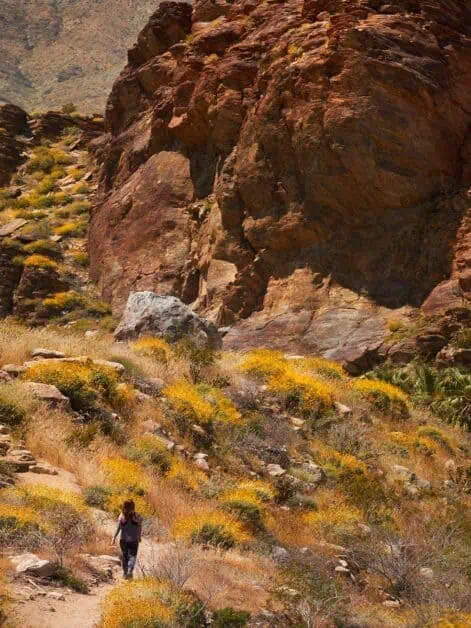
Day 5: Joshua Tree National Park
Approx. drive time from Palm Springs: 1 hour/ 49 miles
Base for the night: Palm Springs, CA
Joshua Tree National Park is one of California’s best! The combination of the interesting Joshua Trees lining the desert with the giant, towering mountains hovering in the distance and some of the most unique rock formations and hiking in the area, it really will stay in your memories on this West Coast USA road trip.
Once you arrive in Joshua Tree, in Southern California, you’ll be given a map and head off on a drive through, the map has lots of suggestions of exhibits to check out where you can make a quick stop at some of them and enjoy the weird and wonderful nature of this place! For a bigger guide of information and things to check out including hike suggestions, you’ll want to read our Joshua Tree National Park guide.
We think it’s best to stay in Palm Springs to enjoy all that Joshua Tree National Park has to offer. Whilst there are other hotels, motels and camp sites closer, they can also get booked up a lot more quickly, and therefore having your base in Palm Springs makes it easier, with only an hour drive to get there. If you do want to move for this night, we’d recommend somewhere like Indio or La Quinta, which will put you a little closer.
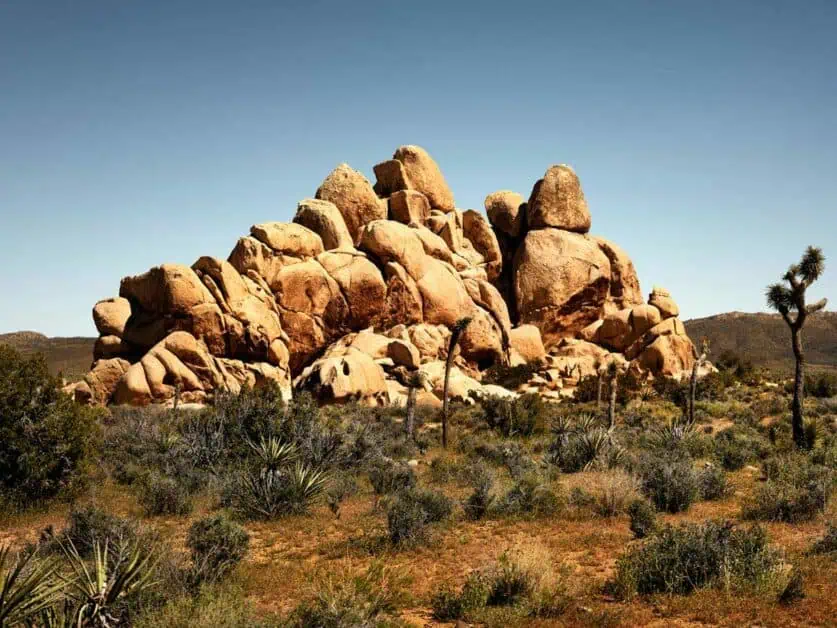
Day 6: Las Vegas
Approx. drive time from Palm Springs: 4 hours 20 minutes/ 278 miles
Base for the night: Las Vegas, NV
From Palm Springs, in California, you’ll be heading up to Las Vegas in Nevada to spend the night before you head up into Utah and Arizona for the next section of the trip. You won’t have a lot of time in Las Vegas, as the drive is quite a long one from Palm Springs and the Joshua Tree area, but once you get there you can spend the afternoon relaxing, checking into your hotel for the night and seeing everything that ‘sin city’ has to offer.
One of the main attractions is the Las Vegas strip, and whilst it can be a little cheesy, it is one of those experiences that you just want to have. If you can, be sure to book a Las Vegas Strip hotel – somewhere like the MGM offers great options that are relatively reasonable.
The area around Las Vegas is quite unique too, and if you want to add a bit of time exploring the landscape around Las Vegas, there’s plenty to see and do, such as Valley of Fire State Park. We’ve published a whole guide on Alternate Las Vegas ideas which will give you some inspiration here.
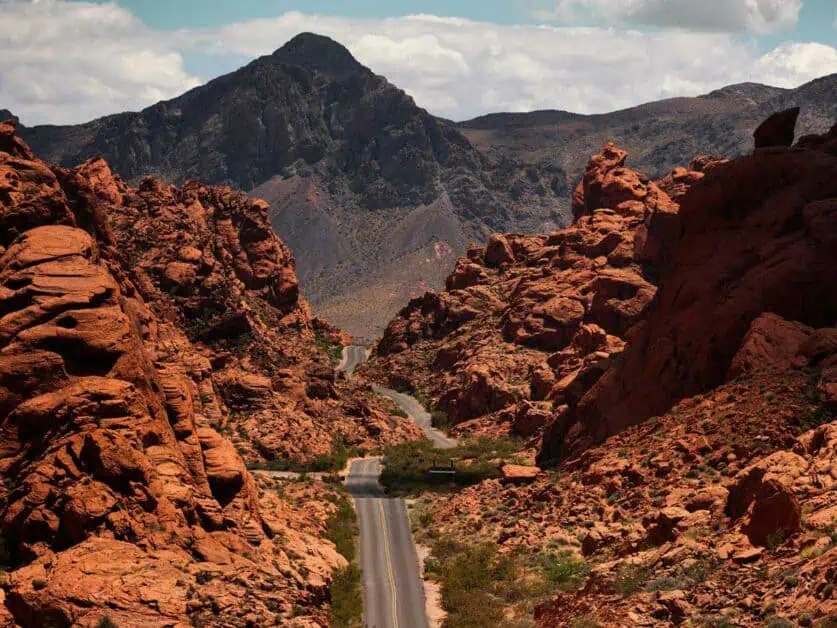
Day 7: Drive to Kanab, Utah, via Red Cliffs National Conservation Area
Approx. drive time from Las Vegas: 3 hours 40 minutes/ 229 miles
Base for the night: Kanab, UT
From Las Vegas, today you’ll drive to Kanab in the south of Utah. It’s just over the state line with Arizona so be mindful that Utah and Arizona keep different time zones, which will mess with your ETA when driving!
Kanab is a great base from which to explore the surrounding National Parks and Monuments: Zion National Park, Bryce Canyon National Park, Vermillion Cliffs and Grand Staircase Escalante National Monument. Kanab itself is a great town – there’s plenty of good accommodation available along with a range of restaurants. The town was a popular filming base for Western Movies and the town museum has plenty of information on this if it is your thing!
Along the way, we suggest you take a detour to visit the Red Cliffs National Conservation area. This is around 120 miles along the i15 from Las Vegas. This is a spectacular area. When we visited, we had the trail completely to ourselves. Be aware, though, that you are in the deep desert here, and temperatures can soar! So, bring plenty of sun block and water and avoid hiking here in daytime sun during the hotter months of the year.
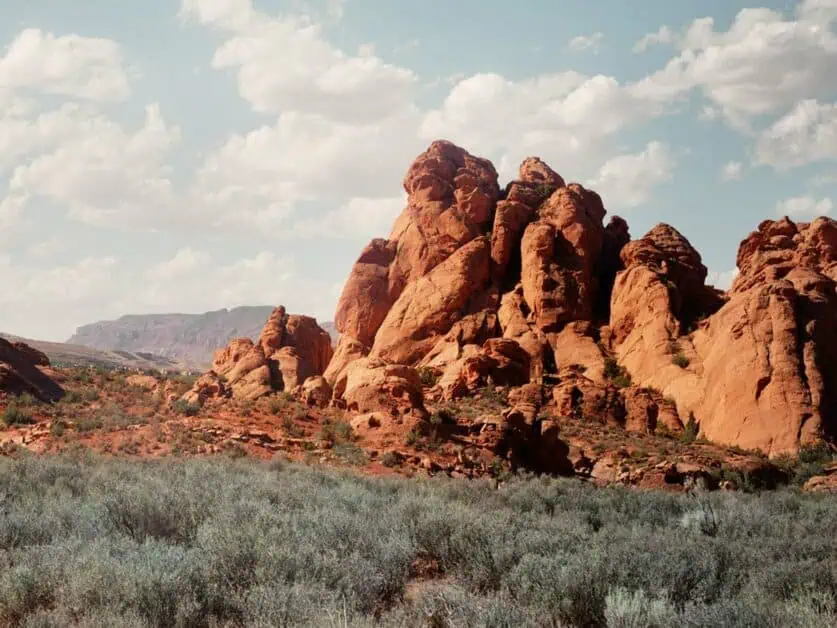
Day 8: Zion National Park
Approx. drive time from Kanab: 30 minutes/ 30 miles
Base for the night: Kanab, UT
From Kanab, the main park entrance is a 30-mile drive. Following this, there’s a scenic drive of around 12 miles through the park to the town of Springdale on the other side (your park entry allows you to leave and re-enter and Springdale is a great place to grab some lunch).
There are plenty of scenic viewpoints along the main drive, but many visitors will want to park up and take the free shuttle bus up Zion Canyon (the road is closed to regular traffic). This bus route takes you to the trailheads for iconic hikes such as Angel’s Landing, Observation Point and the Narrows.
This would be a great opportunity to extend your trip if you fancy doing some more full on hiking and outdoor activities – we’d recommend if you wanted to do this, to spend an extra day here. The hike we’d recommend more than anything is Observation Point. It is still busy, but it is much less busy than neighboring Angels Landing. Plus, the views are just out of this world!
Looking on a map you’ll see that Zion National Park is enormous and only a relatively small part of it is easily accessible. There is a second entrance to the park at Kolob Canyon – this is 38 miles from Springdale – and you can use the same entrance ticket for both parts of the park.
This area is quite different to the main part of the park. You gain height on the scenic drive rapidly and will soon find yourself winding through pine forests with spectacular overlooks.
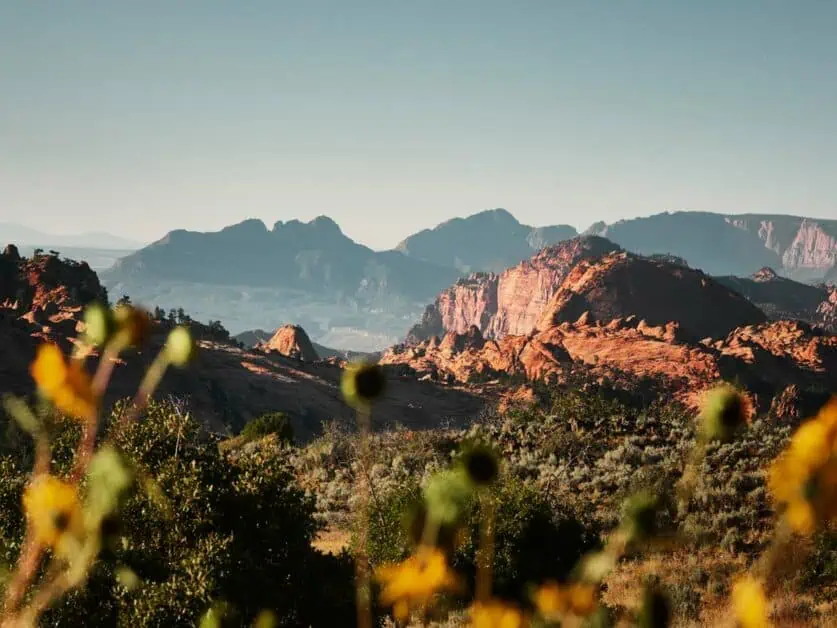
Day 9: Grand Staircase-Escalante National Monument, Vermilion Cliffs and Glen Canyon
Approx. drive time from Kanab: 16 minutes/ 15.5 miles
Base for the night: Page, AZ
Kanab is right on the edge of the Grand Staircase Escalante National Monument and heading east on the 89 towards Page in Arizona, you will soon see some spectacular panoramic vistas that seem to be straight out of a Western Movie. South of here, lies the Vermilion Cliffs National Monument and, as you get closer to Page, where you’ll spend the next two nights, you will pass into the Glen Canyon National Recreation area.
This whole area is a geologist’s paradise, and the multi colored layers of rock that form the cliffs is surely one of the key reasons why Grand Staircase and Vermilion Cliffs have been designated National Monuments. If you wanted to spend some more time here, you easily could. There is simply so much to see and do.
There is plenty to see around here! Before leaving Kanab, go to the tourist information center as they have free guides to the various trails, but amongst our favorites are the Toadstools, where you can see the naturally formed rock mushroom structures known as ‘Hoodoos’ and the Paria Township trail that takes you to a genuine Wild West ghost town.
Turning our attention to Vermillion Cliffs, there are several spectacular locations including White Pocket, Paw Hole and perhaps most famous of all ‘The Wave’ that require specialized off road vehicles to access – either high clearance 4x4s or ATVs. It is possible to arrange guided tours to these locations from Kanab, and they are all well worth a visit.
You’ll also need a permit from the visitor center to do some of the areas in Coyote Buttes – its best to go speak with the visitor center about your plans and they can advise you on what you’ll need.
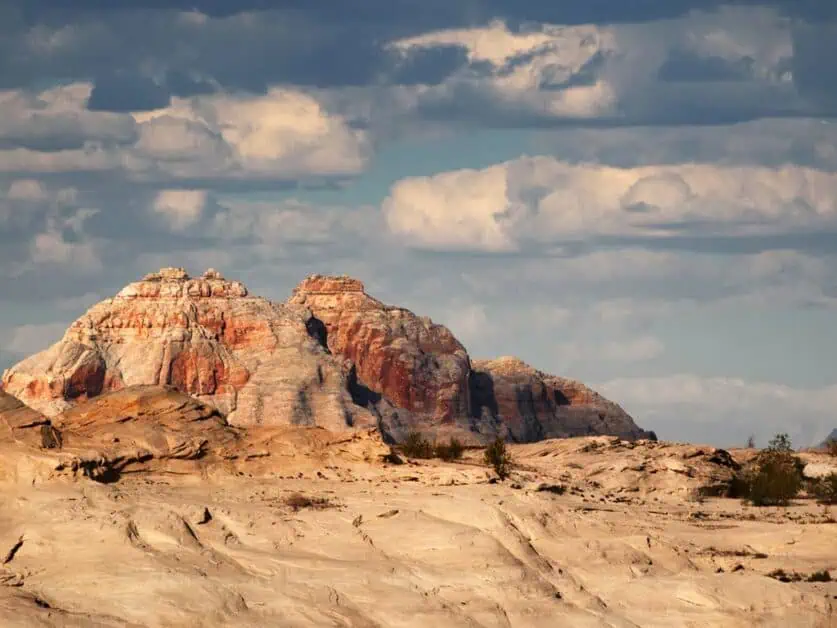
Day 10: Page, Lake Powell, and Horseshoe Bend
Approx. drive time from Page: 16 minutes/ 15.5 miles
Base for the night: Page, AZ
Page has so much to offer – in fact we have a whole guide on the best things to do in Page that you should check out for some inspiration and to plan your day here. From views of the Colorado River, which flows through Page to the Hoover Dam, it’s iconic.
The best way to start the day is with The New Wave hiking trail, which is just outside of Page itself, it’s a 2.1km hike with truly breathtaking views and doesn’t take much time to complete. Whilst the National Parks are undoubtedly beautiful, we feel like this is one of the best sections on this Western US road trip itinerary. This area of the United States is just simply stunning.
The centerpiece of Glen Canyon is Lake Powell. There is a fee to get access to some of the marinas, but the America the Beautiful interagency pass is valid here. There’s the chance to take boats trips and participate in water sports on the lake along with some great hiking and scenic drives on the shore.
The two most iconic sites are no doubt Horseshoe Bend and Antelope Canyon (the Antelope Canyon Navajo Tribal Park lies just outside of Glen Canyon). You can expect massive crowds at both, but there are plenty more opportunities for quieter hikes.
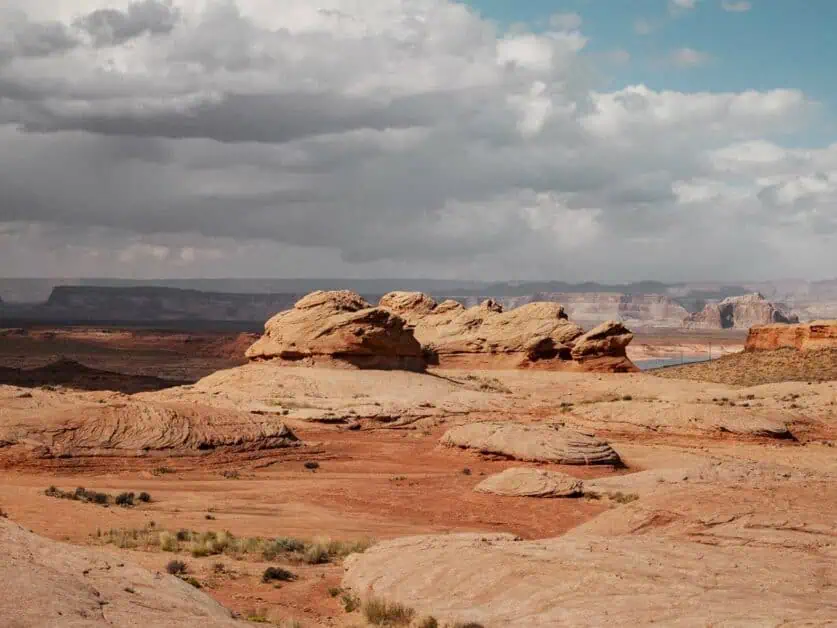
Day 11: Grand Canyon National Park
Approx. drive time from Page: 2 hours 26 minutes/132 miles
Base for the night: Page, AZ
No road trip routes through the US would be complete without this stop. The Grand Canyon is one of those places that if you’ve never been before, you will want to prepare yourself to be wowed. There is no doubt about it, it’s a truly stunning, awe-inspiring place.
You could of course spend a lot longer here. However, in reality, you’ll spend a lot of your day driving to the different exhibits and checking out the views. Once you arrive at the entrance, you’ll be given a map, but the exhibits and viewing platforms are really easy to find as they are signposted throughout the scenic byway.
Whilst there is accommodation in the Grand Canyon National Park around Grand Canyon Village, we think it’s better to base yourself in Page for a further night and drive there and back. Plus setting off from the Grand Canyon will make your already decent drive tomorrow, longer.
It also gets very busy around the village, and you may struggle to find any accommodation unless you’ve booked very far in advance. There are also more limited food and drink options here, whereas Page has a lot to offer!
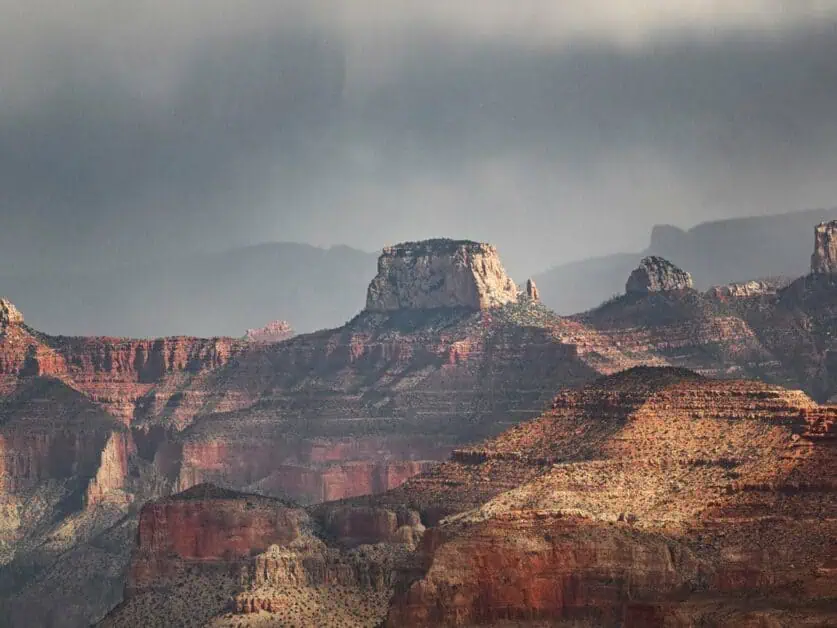
Day 12: Drive to Bryce Canyon National Park
Approx. drive time from Page: 2 hours 40 minutes/151 miles
Base for the night: Panguitch, UT
In a similar way to Zion, the park is built around a scenic drive with a number of pull-in points, and you can see some really amazing things within a short walk of your car. For those who want to venture a bit further, there are trails of varying length within the park.
When you enter via the park ranger station, you’ll be given a map with useful information on trails. They’re super easy to follow and are well sign posted. It’s important to keep in mind that Bryce Canyon is a deservedly popular destination, and you can expect to encounter large crowds here.
In the Winter, Bryce can receive substantial snow fall which sometimes leads to some of the trails being closed off, so it is worth checking in advance to ensure everything is open before travelling to visit.
If you don’t spend the day hiking, you could also use driving in this direction as an opportunity to drive through Dixie National Forest. This is a fantastic scenic drive. You start off driving through the desert, but as soon as you turn off the 89 onto Route 14, things start to change: you rapidly gain height and will soon find yourself in pine forests.
Keep your eyes open and you will notice that the forest is growing on a lava flow from ancient eruptions. In Winter and Spring, you can expect to encounter snow along this route and after heavy snowfall, parts of the road can be closed. There’s plenty of spectacular scenery along here, but one of our favorite stopping points is the overlook of Navajo Lake.
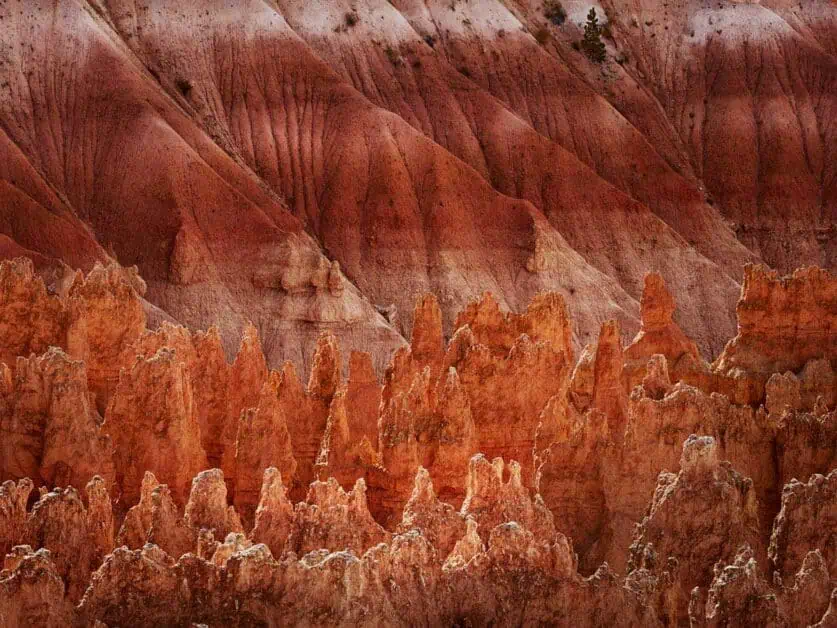
Day 13: Red Canyon and Kodachrome Basin State Park
Approx. drive time from Panguitch: 12 minutes/10 miles
Base for the night: Panguitch, UT
There’s no doubt that the National Parks in Utah are spectacular, but it is a great shame that many visitors concentrate solely on the National Parks and miss out on some of the less well known but equally spectacular National Monuments and State Parks that are nearby.
First off is Red Canyon – which you most likely will have already driven through on the way to Bryce (the Red Canyon Visitor Centre is 13 miles West of the main entrance to Bryce Canyon on the 12).The rock formations in Red Canyon – including natural arches and more of the mushroom-like hoodoos – are jaw dropping and this is made even more so on a fine day when you see the vivid red of the rock against a deep blue sky.
The visitors center serves as the starting point for most of the trails – many of which are suitable for mountain biking as well as hiking. We recommend starting with the Pink Ledges Trail which joins up with the Hoodoo Loop Trail. Together, these two come in at well under a mile and are very easy going and offer a great view of the surrounding rock formations.
You can also hike the much longer Thunder Mountain Trail which starts in pine forests before climbing into the hills. There are some beautiful sections crossing red rock ridges and we would strongly recommend this trail. It’s primarily a mountain biking trail, so keep your eyes and ears open for bikers!
After you’ve spent the first few hours of your day exploring here, head around 30 miles east back past Bryce on the 12 and you will find Kodachrome Basin State Park. As it’s a State Park, any interagency pass you have will not be accepted here. However, the entry fee is well worth it! As you’ll visit toward the afternoon and end of the day, the light and color are absolutely spectacular.
Relatively speaking, Kodachrome Basin is quite small, but there are a number of longer circular trails that will still allow you to have a good hike. A map of these will be provided to you upon entry to the park, and signposting makes for an easy to follow afternoon.
Of course, from here and for all of Utah, if you wanted to extend you could take in areas like Monument Valley, Arches National Park and similar, depending on what you want to see and explore more of.
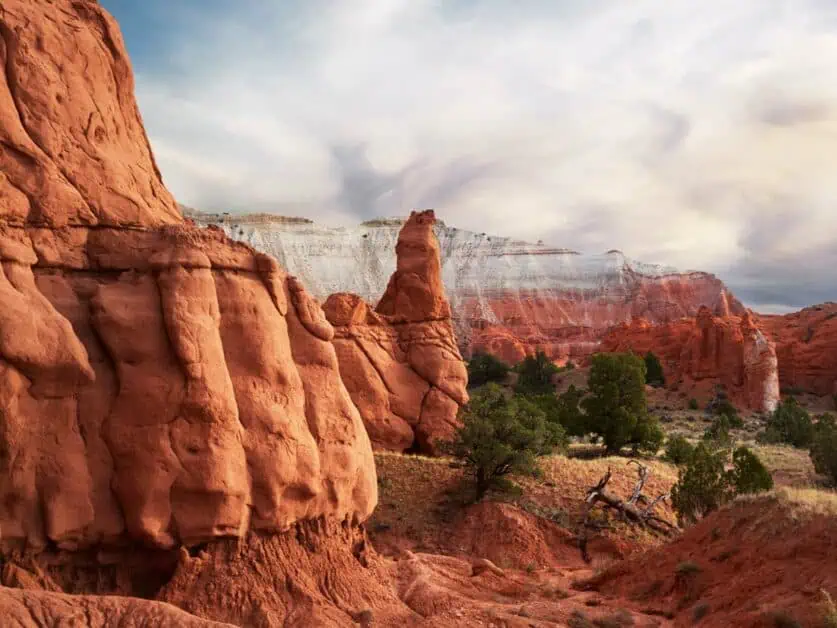
Day 14: Drive to Death Valley National Park
Approx. drive time from Panguitch: 6 hours 30 minutes/380 miles
Base for the night: Amargosa Valley, NV, Ryan, CA or Pahrump, NV
For the next part of your West US road trip itinerary, you’ll be heading back West towards Death Valley. This is a long drive – close to 400 miles and approximately 6hrs – so even if you set off early, you won’t have a full day available when you arrive. With this in mind, we’ve added a second full day to our itinerary for Death Valley. It’s a good idea to take some time at your hotel once you arrive to relax and reset for the next day and the remainder of your trip.
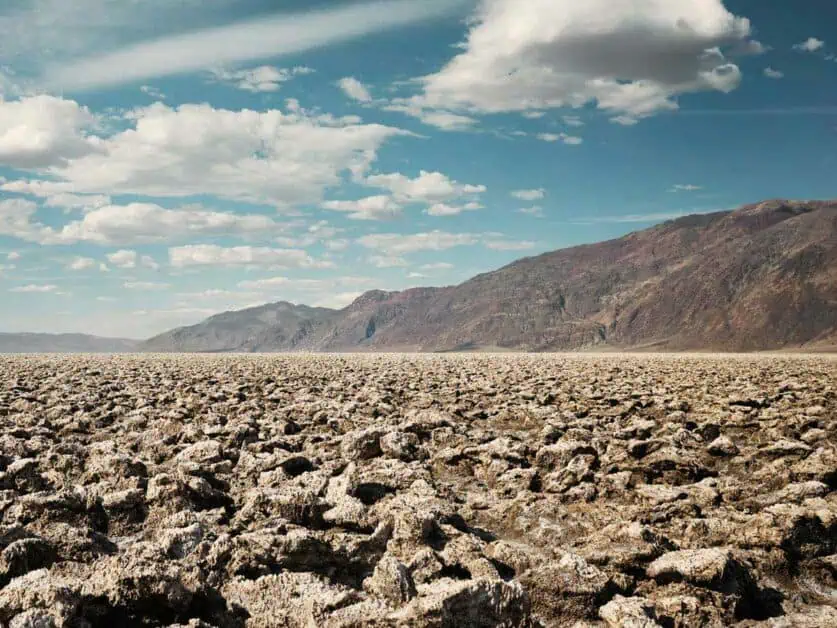
Day 15: Death Valley National Park
Approx. drive time from Panguitch: 40 minutes/38 miles
Base for the night: Amargosa Valley, NV, Ryan, CA or Pahrump, NV
It’s hard to get an understanding of the enormity of Death Valley until you begin your drive through; it is absolutely huge! What we love about Death Valley, aside from its beauty, is that there is the real opportunity to head into the backcountry into the high mountains. Whilst the basin is incredibly hot, the higher mountains provide a cool respite (and incredible views).
As you are likely to only have a day to check out Death Valley, we’d really recommend taking in some of the points on the map provided at the visitor center. Some of these are observation points, whilst some involve relatively short hikes.
Our favorite places to check out would be Zabriskies Point, Artists Palette and The Devils Golf Course. If you want to take in a few more, we’d suggest Mesquite Flat Sand Dunes, Gower Gulch Loop and Ubehebe Crater Rim.
It is worth bearing in mind that Death Valley got its name for a reason and during the summer months it gets exceptionally hot – even at night it can be over 100F! You’re also below sea level in Death Valley (in fact you’re at the lowest point in quite a distance) which increases temperatures substantially. With this in mind, you should choose your accommodation carefully.
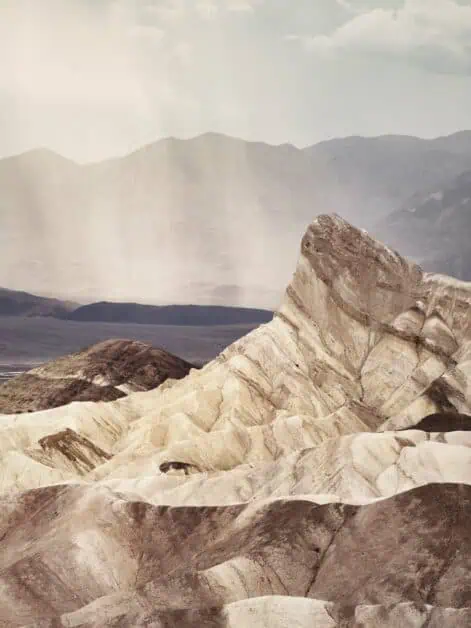
Day 16: Lone Pine and Alabama Hills
Approx. drive time from Death Valley: 2 hours 30 minutes minutes/144 miles
Base for the night: Lone Pine, CA
Lone Pine is one of those small towns with a huge reputation. It sits on the edge of Alabama Hills – an area of dessert with spectacular rock formations that is overlooked by the Sierra Nevada mountains. At 14,505ft, Mt Whitney is the tallest peak you will see here and indeed it is the tallest mountain in the Lower 48 States.
This area is incredible as it houses some of the most stunning scenery in the American West, such as Kings Canyon National Park, Sequoia National Park and the John Muir Wilderness. A fairly large section of the Pacific Crest Trail (PCT) winds through here too. You could spend weeks exploring here, and if you’re into high alpine hiking, you may want to consider extending some days here.
This is challenging, high altitude terrain. Many of the trails and campsites here require permits which can often be reserved in advance – so if you do want to head into the back country, be sure to research this in advance. You’ll also be entering Bear country and there are strict guidelines issued by the Park Services on how food must be stored when hiking and camping in the back country.
Mt. Whitney itself is a challenging high-altitude hike with significant elevation gain, which attracts many experienced hikers and those travelling with professional guides.
Alabama Hills is famous as a filming location and as you explore off the main road – called ‘Movie Road’ – you will find places with names like ‘Lone Ranger Canyon’. Even if you don’t head into the mountains, they still provide an incredible backdrop to Alabama hills and there are plenty of hiking and rock climbing opportunities here too. Going and spending some time in Alabama Hills will stay up there in your memories and for good reason.
Accommodation is not a problem in Lone Pine. Alabama Hills is BLM land and camping here is free and on a first come, first served basis– but be warned, the pitches fill up quickly! Lone Pine itself has plenty of motels and restaurants if that is what you’d prefer.
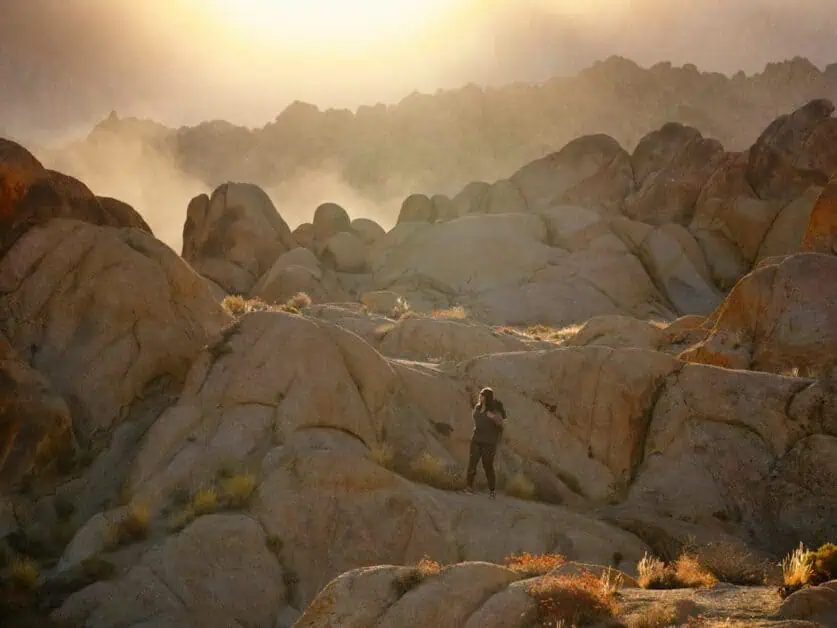
Day 17: Mammoth Lakes
Approx. drive time from Lone Pine: 1 hour 40 minutes minutes/100 miles
Base for the night: Mammoth Lakes, CA
The drive along the 395, taking in the iconic mountain scenery is without a doubt one of the highlights of this West US road trip itinerary. It’s truly stunning. There is so much hiking to be done in this area, we’d recommend heading off early from your accommodation in Lone Pine and going straight to the trailhead for Little Gem Lakes.
The Little Gem Lakes trail is by far one of the most beautiful in the area. It does start from pretty high altitude (starting at over 3,000 meters) but you will not look back if you do this hiking trail. Expect to come across a number of lakes with pristine alpine wilderness and towering mountains surrounding them.
You can also extend this hike to take you higher up into the mountains, depending on your experience level and wants from the trail. One of the good things about this hike is that you can do as much or as little as you’d like as it’s linear.
If you have time afterwards, be sure to check out Convict Lake too before heading into town and enjoying the mountain town charm that Mammoth has to offer for the evening.
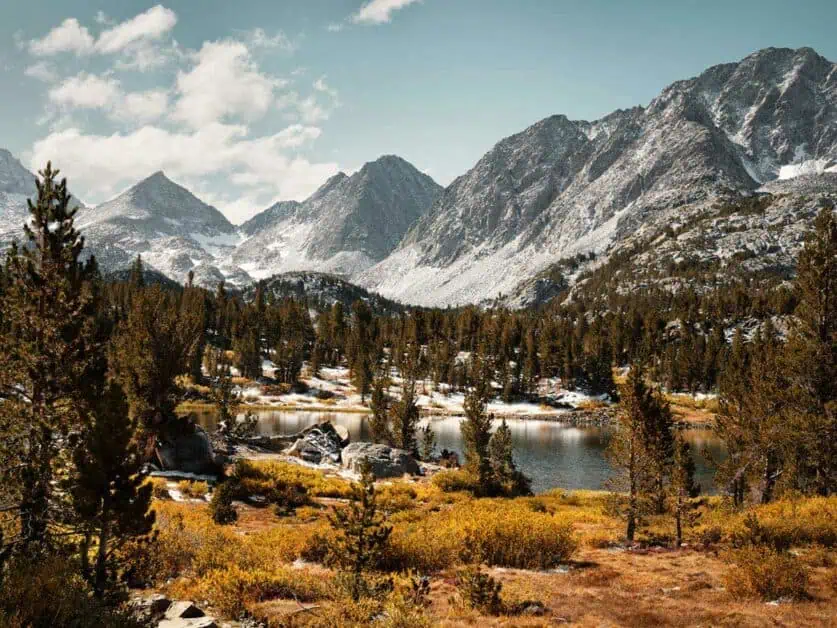
Day 18: Drive to Yosemite via Mono Lake
Approx. drive time from Mammoth: In summer months, 45 minutes roughly
Base for the night: Yosemite, CA
It’s important to keep in mind that access to Yosemite National Park is much different in the winter months to the summer, and the drive from Mammoth is 45 minutes when the road into the park is open from that site. If not, it’s more like a 6-hour journey as you need to drive all the way around to get to the Yosemite Valley. So, plan accordingly.
On your way, you’ll go past Mono Lake, which is well worth a detour to see this incredible formation and incredible natural scenery. It’s a saline soda lake, and this is the reason for the amazing formations. There is a visitor center when you arrive, and you can also go from there to take in some of the views of the lake before you continue your drive to the National Park. Again, this drive is stunning!
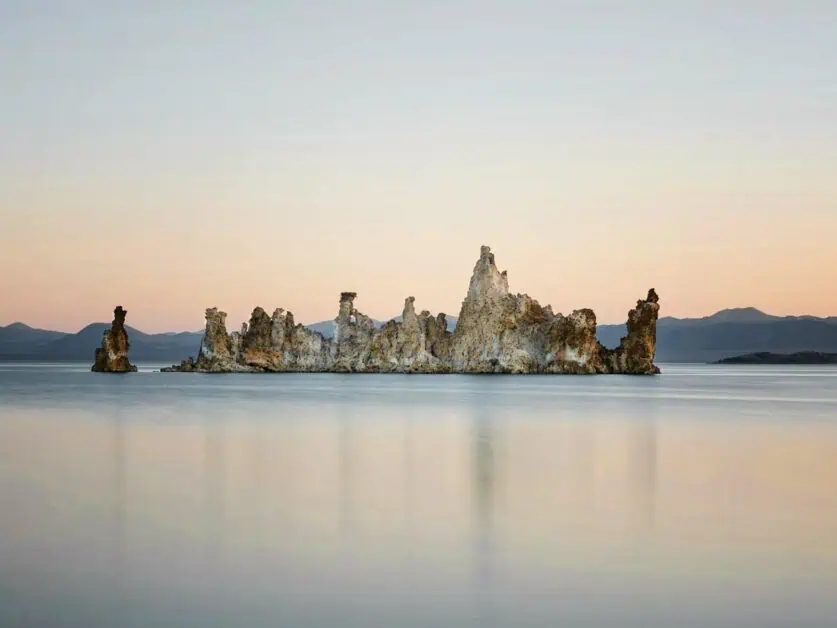
Day 19: Yosemite National Park
Base for the night: Yosemite, CA
Everybody has heard of Yosemite National Park, it’s one of the most iconic places in the whole country, and without a doubt, in this West US road trip itinerary. Today you’ll have a whole day to explore the National Park.
You can either take in some of the highlights on a whistle stop tour or commit to a longer hike which may take most of the day. There are various hikes that you have to get a permit well in advance to hike, such as Half Dome, and if you time it right, you could very well get one of these (though they’re hard to get hold of).
However, there are lots of other hikes you could do and things to experience outside of these big hitters – the visitor map you’ll be given when you enter the National Park is a really good resource for this!
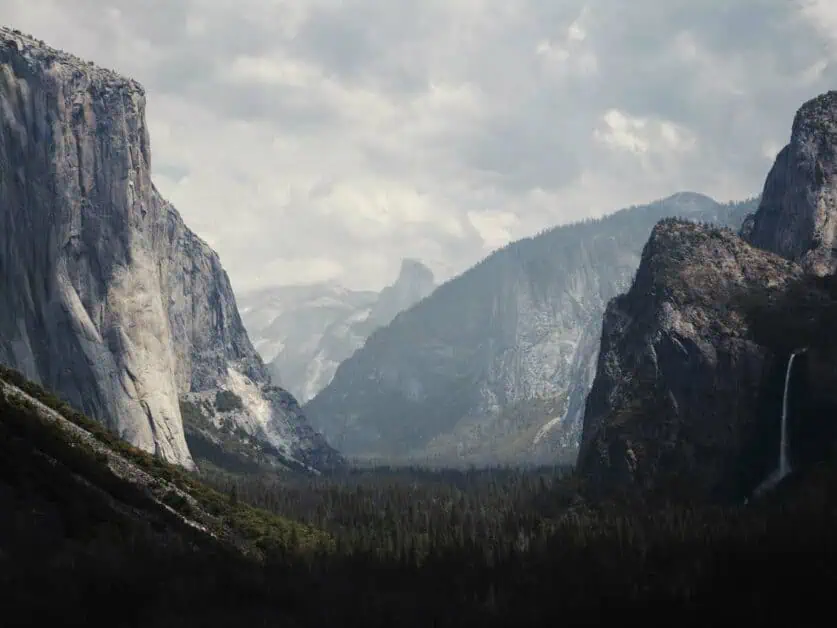
Day 20: South Lake Tahoe
Approx. drive time from Yosemite: 4 hours/178 miles
Base for the night: South Lake Tahoe, CA
For one of your last days, you’ll drive to South Lake Tahoe to check out this iconic area before heading back to the city for your return journey home. As it’s a fairly long drive, you won’t have the full day, but when you arrive, you will want to get straight out onto the water.
There is so much to do around South Lake Tahoe from swimming, to kayaking and paddleboarding through to renting a boat. There’s also plenty of hiking to be had and if you take a drive in the area, you’ll find some amazing viewpoints. Be sure to check out Emerald Bay State Park.
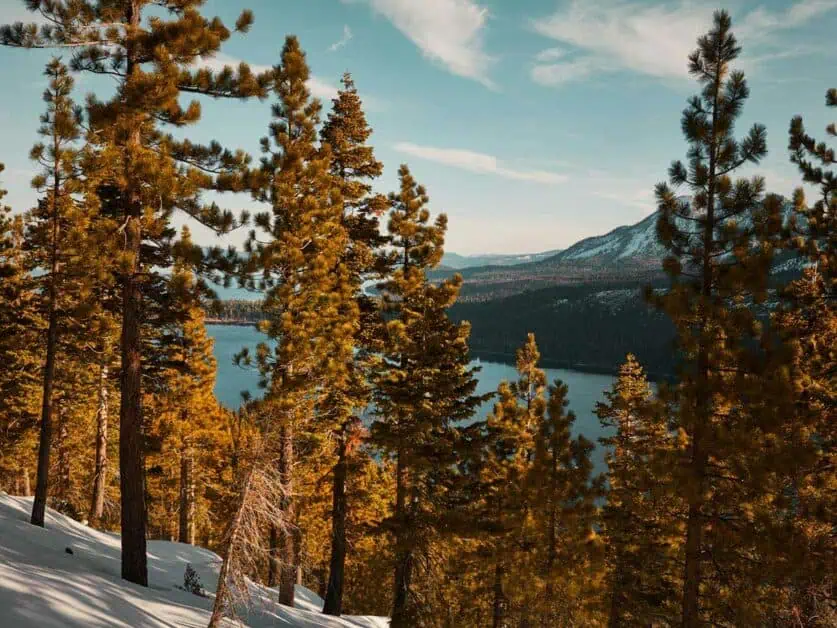
Day 21: Drive to San Francisco and San Francisco International Airport
Approx. drive time from Yosemite: 3 hours 30 minutes/199 miles
If you can, we’d recommend spending the night in San Francisco before flying home, but if you need to get back, head straight to the airport.
If you have time to check out San Francisco, and you’ve never been before, there is so much to see. The Golden Gate Bridge is one of the most obvious but be mindful that there are charges applicable to crossing the many bridges in San Francisco. You can find out more about these here.
We’d also recommend checking out China Town, which is iconic, as well as Fisherman’s Wharf.
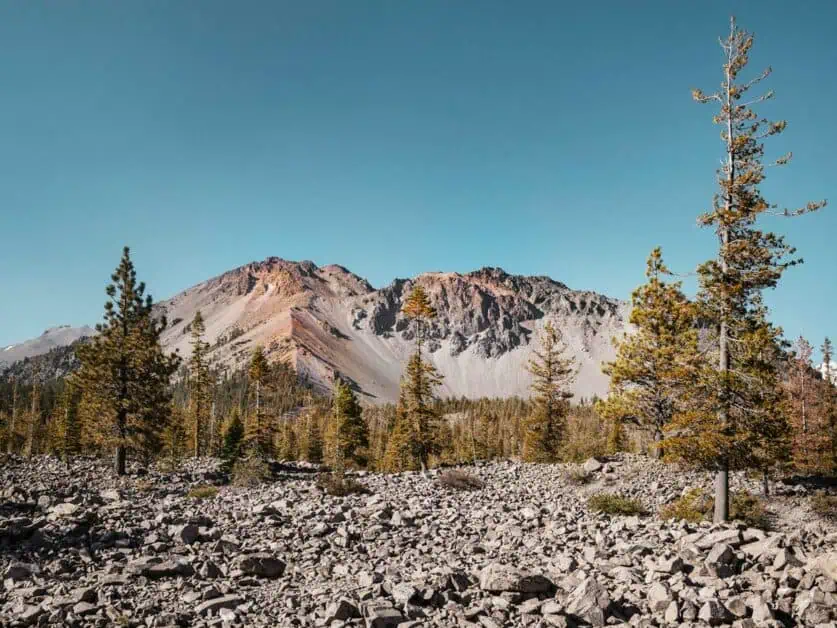
West Coast Road Trip Tips
There is a lot to consider on a road trip of this size, especially when there is so much to see and do – you really are cramming so much into such a short amount of time. We’ve broken down some of the most frequently asked questions to make it easier to plan your trip.
Best Time to Visit West Coast
This really varies as you’re experiencing a whole range of different locations with varying temperatures and climates. It’s about getting the right sweet spot. Of course, if you’re going to make alterations to the itinerary then base it on that, but we’d say the ideal time to visit is the start of September so you’re getting the best of everything and is a great time of year for cooler temperatures in the desert and the start of fall foliage in the mountains.
How to Extend of Make Changes to Your Trip
There are so many areas in the itinerary that you could extend, make longer, or drop completely depending on what you want to see. In each day and section, we’ve tried to make suggestions of other areas you could go onto from there to help you make that decision. It’s best to check on the map how things marry up together if you decide to make any substantial changes.
It’s also important to remember that whilst we’ve fitted in a lot, there is still a lot you won’t get to see, there are too many beautiful areas to fit it all into one trip. For example, this trip leaves off areas in California like the Shasta Cascade and Lassen Volcanic National Park not to mention Sedona in Arizona and Arches National Park, Capitol Reef National Park and all the many other National Parks, National Monuments and State Parks along the way!
Making a Budget for Your Road Trip
As this is a long trip, you will want to budget for extra cost in certain areas if things come up – and it is hard to put an exact figure on how much you need for a trip like this as it will vary wildly depending on your taste and wants in accommodation, food, and day to day expenses.
A good place to start with looking at how much to budget for an adventure like this is to read our planning an adventure guide, which goes into more detail on costs for bigger trips in the final section.
One of our best hints for saving money on this trip: buy an America the Beautiful Pass – it’ll allow you entry into all the National Parks for a one-off flat fee and it lasts a whole year. You do still need to pay entry for some of the State Parks though. However, your interagency card will save you money!
Camping on your Western US Road Trip
A very real prospect for your trip is to camp. You may want to look at hiring an RV or maybe you already have a camper van you can use if you’re already in the US. There are generally plenty of options for camping along the way – for example, BLM camp sites give you a much more reasonable option than some commercial ones or ones in specific National Parks.
There are generally National Forest campsites dotted around in areas with National Parks, which you can make use of and generally require a usage fee to be paid in cash (so worth keeping in mind).
Keep in mind that you can’t just turn up usually, especially in prime season expecting to find a camping spot in a National Park or similar area, you will likely need to book in advance, so do your research and make sure you have the needed permits or reservations ahead of time.
Likewise, if you feel like changing this up a bit and heading into the backcountry, you can look to camp on many of the hiking trails. Most of these will need permits for use, which can be found on Recreation.gov.
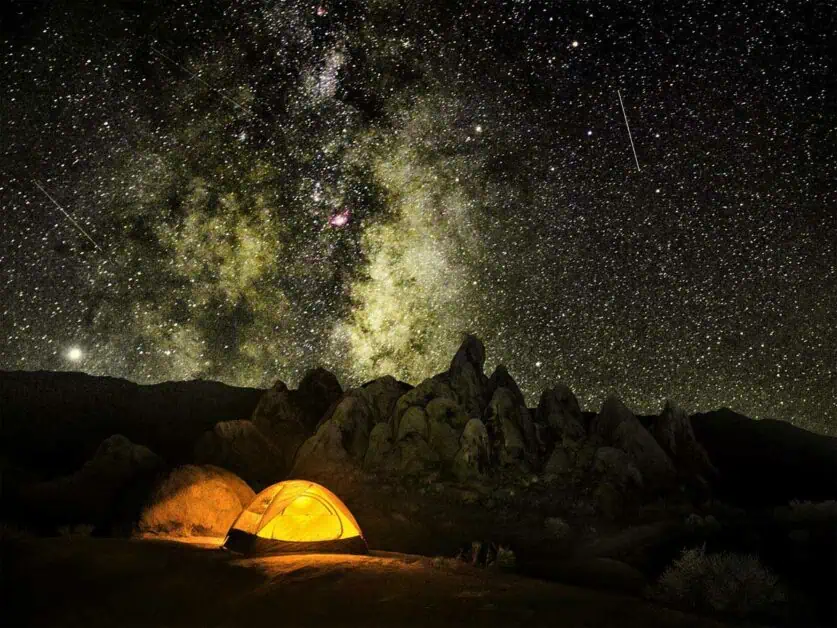
Gear Checklist
What you bring will be of course individual to you, but we’d recommend checking out our day hiking checklist to make sure you’re prepared to enjoy the wilderness as much as possible. Depending on your other needs for the trip, you can also check out our gear and equipment guides.
Enjoy the American West
We really hope you have enjoyed reading through our itinerary and it has given you some inspiration to plan your own road trip. We think the real beauty of travelling around America is just how vast it is. In writing up this article, we’ve had to make some tough choices on what to include and what not to. There’s just so much to see!
Whatever you see on this trip, you are guaranteed to have incredible memories of it!
